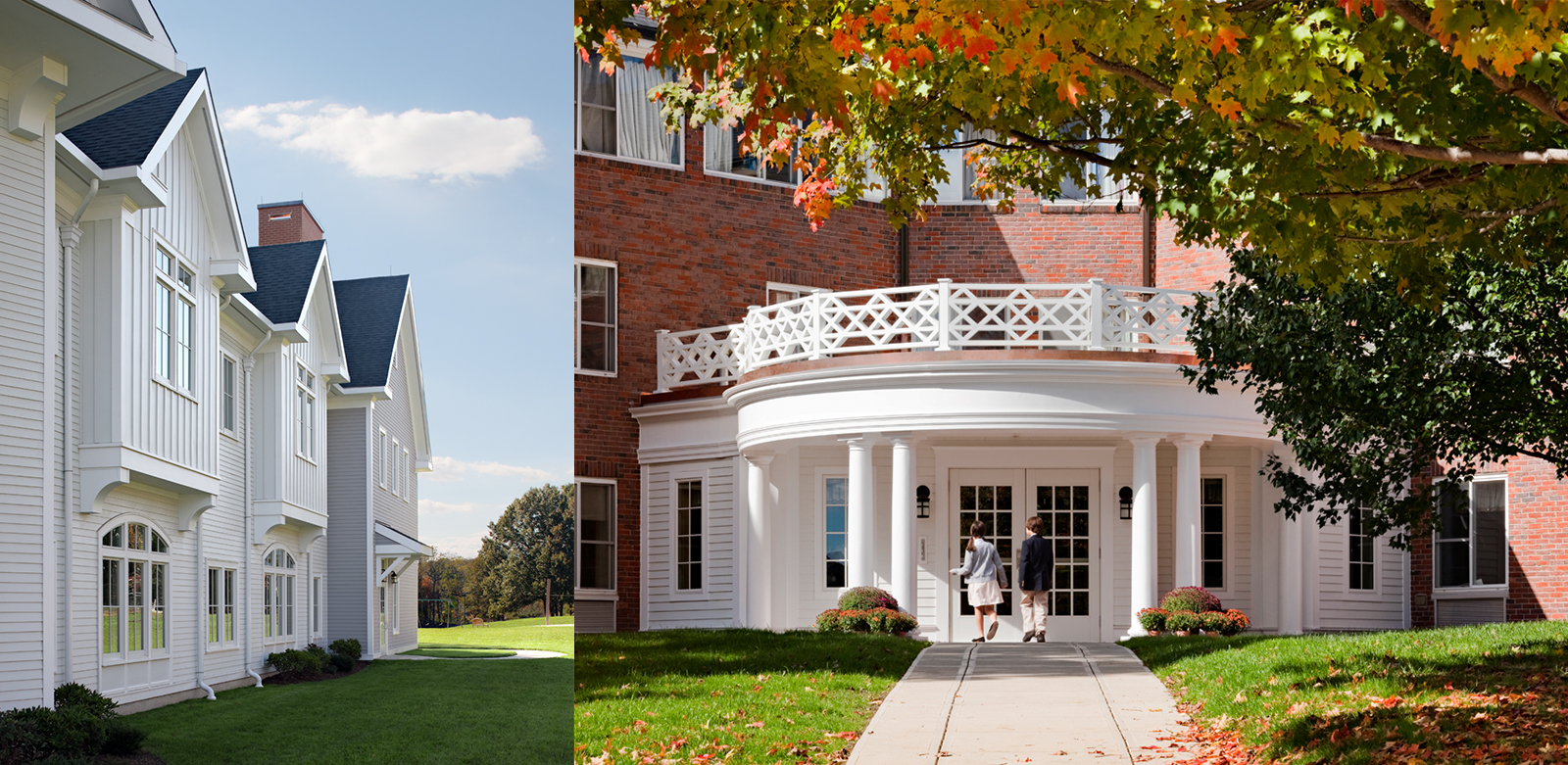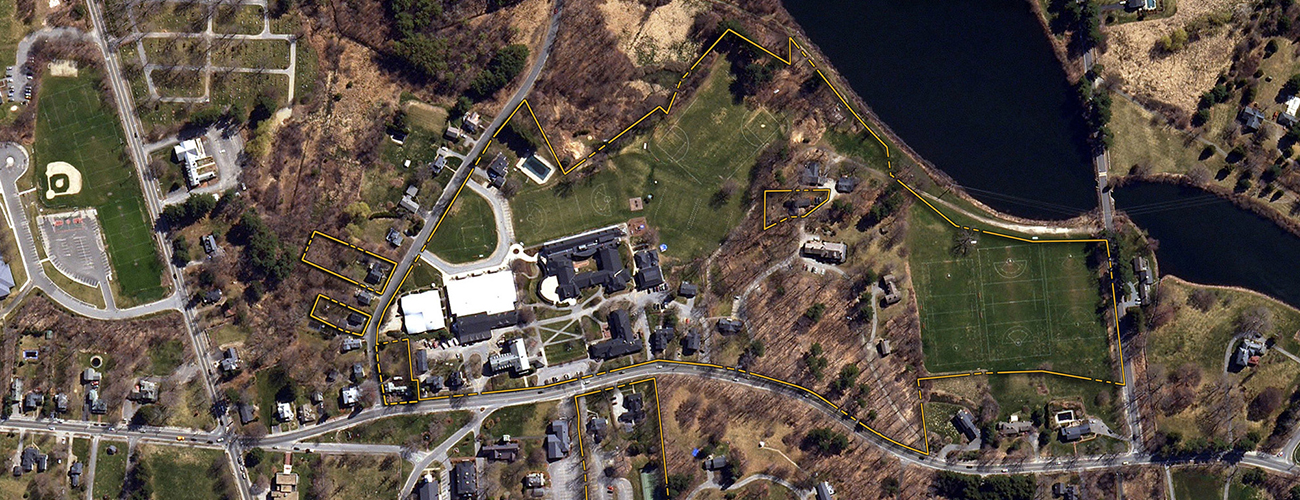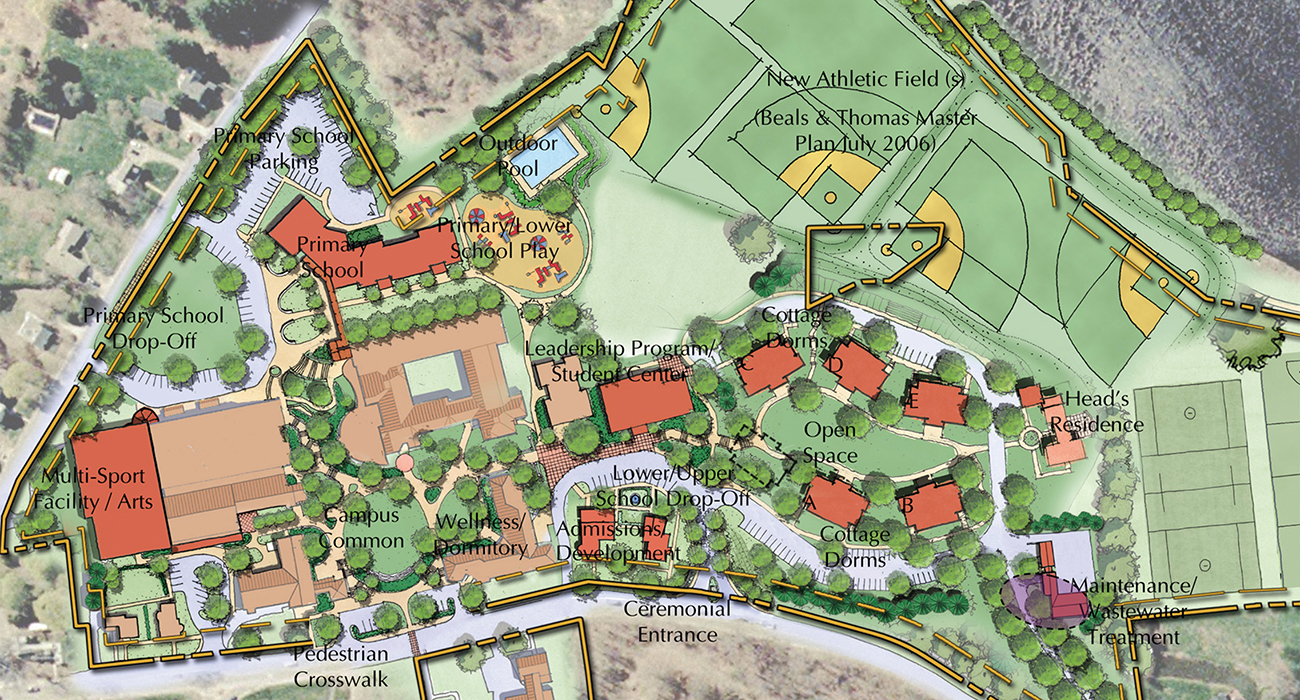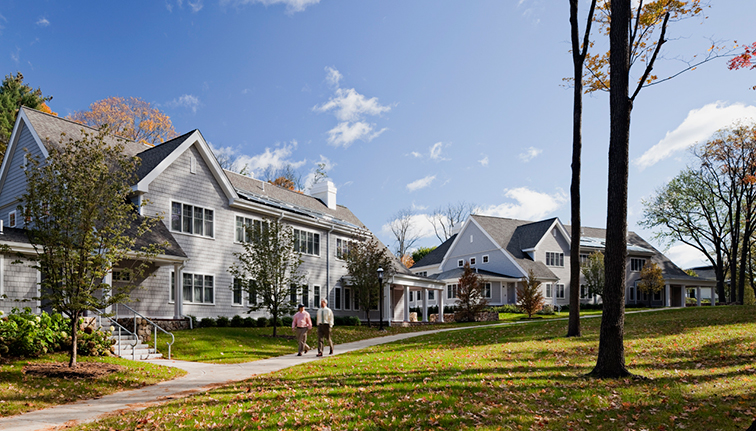
SLAM created a Campus Master Plan for the 475 student Pre-Kindergarten thru Grade 9 day and junior boarding school that allowed for expanding enrollment, provided for a new primary school, dorms, wellness center, student center, arts center and expanded athletics as well as a new campus entrance.
![[logo]](https://slamcoll.com/wp-content/themes/sub151-SLAM/resources/images/logo-only.png) at-a-glance
at-a-glanceThe Campus Master Plan needed to address the current needs in various programmatic areas including academics, arts, athletics, student services and facility support, while expanding the grade configuration to include Pre-Kindergarten and Kindergarten and incorporating a modest enrollment increase to approximately 470 students. The school also wanted to upgrade and expand student and faculty housing, create a new main entrance to the school, organize vehicular circulation, and strengthen the campus organization, especially pedestrian routes and gathering places. The Master Plan also needed to integrate a major acquired property onto the campus.

The campus “before” lacked programmatic areas. It needed larger student & faculty housing with better pedestrian & vehicular circulation. Overall it needed better organization.
The three-phase process included an assessment of the existing conditions, needs assessment, and master planning. The Master Plan established a major pedestrian walkway called “Fay Street”, created a new residential quad with smaller scale “village dorms” on the acquired property, developed a new primary school, and added a new main entrance. The vehicular circulation located along the perimeter accommodates an on-site car line for student drop-off and pick-up. Additionally, the Master Plan used sustainability best practices and provided an on-site waste water treatment.



The Master Plan established a new residential village that would allow for the first two dorms to be set into an overall design for a student-centered village of five dorms. Each dorm was positioned to actively engage a village green while providing a clearly defined pedestrian “main street” connection to the balance of the campus.



These buildings are not simply designed to be more efficient and have less environmental impact, but will also become an organic teaching tool that will help foster a mindfulness of living responsibly.
